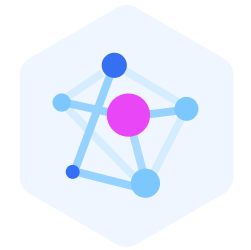Embedding Layer in Machine Learning

Embedding Layer in Machine Learning
An embedding layer converts complex data into numerical vectors that can be processed by neural networks. This post explains what embedding layers are, how they work and why they are so important in machine learning. Find out how they are used in natural language processing, recommendation systems and more.
Key Takeaways
Embedding layers turn high dimensional categorical data into dense vectors so neural networks can process it better.
They are used across many applications including natural language processing and recommendation systems and boost model performance.
Challenges in implementing embedding layers like managing large vocabularies and variable length sequences can be solved by subword tokenization and dynamic padding.
What is an Embedding Layer?
 An illustration of an embedding layer in a neural network, showcasing the embedding process
An illustration of an embedding layer in a neural network, showcasing the embedding process
Embedding layer is a key component in machine learning models that helps to handle high dimensional data by reducing it to a more manageable form. It converts categorical or discrete data into continuous vectors so that neural networks can process it. This simplifies the data representation and allows models to capture the relationships between inputs which traditional encoding methods miss.
Embedding layer mainly converts the input into a low dimensional vector space so that deep learning models can process the data more efficiently. Each component of these high dimensional vectors then represents a feature of the input so data is better represented.
Embedding layers convert categorical data into a format suitable for deep learning models, thereby supporting a wide range of features and significantly enhancing performance.
How Embeddings Work
Embeddings map integer indices to dense vectors of fixed amount, turning input sequences into dense representations, essentially wrapping high dimensional data. In PyTorch the nn.Embedding function converts categorical indices into dense vectors so the data is ready for the neural network.
Embedding involves two steps: transforming categorical data and reducing high dimensional data into lower dimensional vectors. The following sections will go into more detail on these steps and what embedding means in machine learning.
Categorical Mapping
Categorical mapping is the core of embedding layers. Each word or category in the input data is encoded with a unique integer, a simple numerical representation. The embedding layer looks up the dense vector for each integer word index in the vocabulary and turns high dimensional categorical data into dense continuous vectors.
This is a lookup table, mapping each integer to a specific dense vector. One-hot encoded vectors are high dimensional and sparse, embedding layers turn them into dense vectors of fixed size and improve classification accuracy and speed especially for large and complex datasets.
Dimensionality Reduction
Embedding layers are also responsible for dimensionality reduction. They shrink high dimensional data into lower dimensional vectors so the data can be processed by subsequent layers. This is crucial for computational efficiency and for the first embedding layer can significantly less dimension to process data fast, often using an embedding matrix.
Despite dimensionality reduction, embedding layers keep the important information and input data quality. The vectors in the embedding layer are learned during training so no information or input value is lost and we can still derive meaningful insights.
Applications of Embedding Layers
 An illustration representing various applications of embedding layers in machine learning
An illustration representing various applications of embedding layers in machine learning
Embedding layers are used across many domains, solving complex machine learning tasks. In natural language processing, embedding layers are used for sentiment analysis and text classification, so models can understand and process text better. In recommendation systems, they create shared vector spaces for users and items, so personalized recommendations and user experience can be improved.
Embedding layers also apply to fraud detection and bioinformatics, to analyze complex patterns and relationships in the data. Their versatility and effectiveness makes embedding layers a must have in building new AI applications, to get accurate models and better data quality across many use cases.
Natural Language Processing
Embedding layers have changed the game for text data in NLP. Word2vec converts words into dense vectors that capture the semantic relationships in between them. GPT-3 uses these embeddings to understand and generate human text, showing what embedding layers can do in NLP.
Embedding layers are important for tasks like language translation where capturing the relationships between words in different languages is key. They’re typically also crucial for sentiment analysis where you turn text data into numerical formats that capture the sentiment nuances so you can classify and analyse accurately.
Recommendation Systems
Recommendation systems rely on embedding layers to model user-item interactions. By transforming these interactions into a lower dimensional space, embedding layers capture user behaviour and preferences better, and boost recommendation algorithm performance.
Platforms use the embedding vector and layers to create shared embedding vector spaces and embedding vectors and bring similar items and user preferences together. This dense representation allows for fast computation of similarity and relevance and personalized recommendations that improve user experience and satisfaction.
Image and Audio Analysis
Embedding layers are important in image and audio too. Techniques to represent images as dense vectors capture the important visual features for image classification and object detection among other tasks. CNNs and visual transformer models usually do this kind of embedding. Embedding layers in audio processing extract the important features for speech recognition so the models can understand and process the audio data. This extends to video analysis where embedding layers categorize and analyze the video content by capturing the important visual and audio features.
Benefits of Embedding Layers
 An illustration highlighting the advantages of using embedding layers in deep learning models
An illustration highlighting the advantages of using embedding layers in deep learning models
Embedding layers have many benefits, mainly to handle large categorical data efficiently. Simplifies the processing of high dimensional data, makes the machine learning models more efficient and effective.
Also enables representation learning, so the models can understand the complex relationships in the data and get meaningful insights. This is important to build accurate and robust machine learning models that can do many tasks and applications.
Challenges and Solutions in Implementing Embedding Layers
 An illustration depicting challenges and solutions in implementing embedding layers
An illustration depicting challenges and solutions in implementing embedding layers
Despite their advantages, embedding layers come with challenges. One significant issue is managing high-dimensional, sparse one-hot vectors. To prevent overfitting, regularization techniques like dropout or L2 regularization are employed, ensuring the model’s generalizability.
Fine-tuning embeddings during model training helps optimally adjust them for the specific task at hand. This process ensures embedding layers effectively handle complex categorical data across various fields and applications.
Handling Large Vocabularies
Managing large vocabularies is a common challenge for embedding layers. Techniques like subword tokenization break down words into smaller units, efficiently representing complex vocabulary without inflating first layer' overall size. This approach mitigates challenges associated with large vocabularies, ensuring embedding layers can handle extensive and diverse datasets effectively.
Variable-Length Sequences
Variable-length sequences also pose a challenge. Padding is commonly used to standardize sequences for model training, ensuring all input sequences are of a fixed size.
Dynamic padding is an advanced technique that adaptively manages the lengths of input sequences during training, enhancing the model’s ability to process sequences of varying lengths without compromising performance.
Practical Implementation of Embedding Layers
 An illustration of the practical implementation of embedding layers in neural networks
An illustration of the practical implementation of embedding layers in neural networks
Implementing embedding layers involves several steps, including initialization, architecture integration, and best practices. Different frameworks offer various functions for embedding layers, like TensorFlow and PyTorch.
Understanding the implementation details and best practices for each framework is crucial for effectively utilizing embedding layers in machine learning models.
Initializing the Embedding Layer
Embedding layers can be initialized through random initialization or by using pre-trained embeddings. Pre-trained embeddings leverage representations learned from large text corpora, offering a robust starting point for specific tasks.
Fine-tuning these pre-trained embeddings can further enhance model performance, integrating them effectively to improve accuracy and efficiency.
Integrating with Neural Network Architectures
Embedding layers can integrate into various neural network architectures, including Convolutional Neural Networks (CNNs) and Recurrent Neural Networks (RNNs). In CNNs, embedding layers enhance feature extraction capabilities, while in RNNs, they improve sequential data processing.
These layers serve as inputs to subsequent layers, which can be dense, convolutional, or recurrent, depending on training dataset and the task’s nature.
Evaluating Embedding Quality
Evaluating the quality of embeddings is crucial to ensure their effectiveness in various tasks. Visualization techniques like t-SNE (t-distributed Stochastic Neighbor Embedding) help understand the clustering and relationships of embeddings, providing insights into how well the embedding layer has captured the underlying data structure.
Maintaining the quality of embeddings is essential for achieving high model performance. Regular evaluation and fine-tuning of embeddings ensure that representations remain accurate and useful for their specific tasks.
Summary
Embeddings are a big deal in modern machine learning. They take complex high dimensional data and turn it into something manageable so deep learning models can understand and process it better. From NLP to recommendation systems, and image and audio analysis, embeddings are key to better performance across many applications. By tackling problems like large vocabularies and variable length sequences and practical implementation strategies, embeddings can make machine learning models more accurate and effective. So get embedding and get innovating in AI!
Frequently Asked Questions
What is the primary purpose of an embedding layer in machine learning?
The primary purpose of an embedding layer is to transform high-dimensional data into a lower-dimensional vector space, which facilitates better data representation and enhances the ability of neural networks to learn relationships among inputs effectively.
How do embedding layers handle large vocabularies?
Embedding layers manage large vocabularies effectively through techniques like subword tokenization, which deconstructs words into smaller, manageable units, thus maintaining efficiency in representation. This approach prevents excessive growth in vocabulary size beyond the model size while ensuring comprehensive coverage of the vocabulary.
What are the benefits of using pre-trained embeddings?
Utilizing pre-trained embeddings significantly boosts model performance by providing well-established representations from extensive text data. This approach not only enhances accuracy but also increases efficiency when fine-tuned for specific applications.
How do embedding layers improve the performance of recommendation systems?
Embedding layers enhance recommendation systems by effectively mapping user-item interactions into a lower-dimensional space, which captures user preferences and behaviors. Consequently, this leads to more accurate and personalized recommendations.
What techniques are used to evaluate the quality of embeddings?
One effective technique to evaluate the quality of embeddings is the use of visualization methods such as t-SNE, which help in understanding clustering and relationships between elements within the data. This approach ensures that the embeddings accurately reflect the underlying structure of the data.
- Key Takeaways
- What is an Embedding Layer?
- How Embeddings Work
- Applications of Embedding Layers
- Benefits of Embedding Layers
- Challenges and Solutions in Implementing Embedding Layers
- Practical Implementation of Embedding Layers
- Summary
- Frequently Asked Questions
Content
Start Free, Scale Easily
Try the fully-managed vector database built for your GenAI applications.
Try Zilliz Cloud for Free